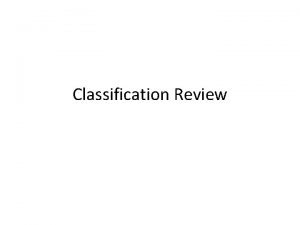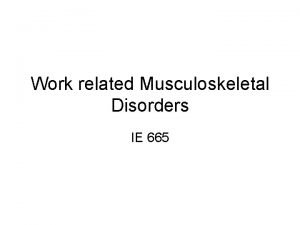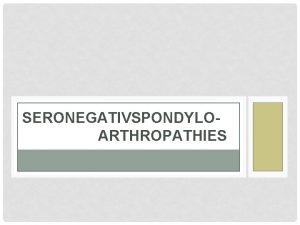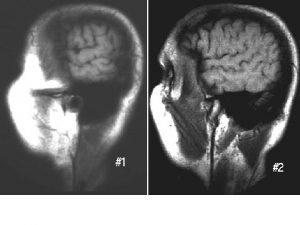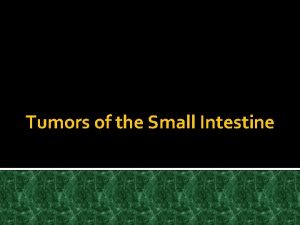SERONEGATIVSPONDYLOARTHROPATHIES DEFINITION These comprise a group of related



























- Slides: 27

SERONEGATIVSPONDYLOARTHROPATHIES

DEFINITION: • These comprise a group of related inflammatory joint diseases, which show considerable overlap in their clinical features and a shared immunogenetic association with the HLA –B 27 antigen. They include : • Ankylosing spondylitis • Axial spondyloarthritis Mneumonic • Reactive arthritis PEAR/REAP (including Reiter syndrome ) • Psoriatric arthritis • Enteropathic (associated with inflammatory bowel disease )

CLINICAL FEATURES COMMON TO SERONEGATIVE SPONDYLOARTHRITIS : • • • Assymmetrical inflammatory oligoarthritis Sacroilitis and inflammatory spondylitis Inflammatory enthesitis Tendency for familial aggregation RF and ACPA negative Absence of nodules and other extra articular features of RA • Typical overlapping extra articular features such as mucosal inflammation, conjunctivitis, buccal ulceration, urethritis, prostatis, anterior uveitis, erythema nodosum etc.

1. ANKYLOSING SPONDYLITIS : • Pathophysiology: Ankylosing spondylitis is thought to arise from an ill defined interaction between environmental pathogens and host immune system in genetically susceptible individuals. Wider alterations in human gut microbial environment are increasingly implicated, which could lead to increased levels of circulating cytokines such as IL-23 that can activate synovial T cells. HLA-B 27 molecule is implicated through its antigen presenting function. This could lead to inflammatory cytokines release by macrophage and dendritic cells, thus triggering inflammatory disease.

PATHOPHYSIOLOGY

PATHOPHYSIOLOGY

ANKYLOSING SPONDYLITIS : - Clinical features: • Low back pain and early morning stiffness with radiation to buttocks or posterior thighs. • Symptoms are exacerbated by inactivity and relieved by movement. • The disease tends to ascend slowly, ultimately involving the whole spine. • As the disease progresses, the spine becomes increasingly rigid as ankylosis occurs. • Early physical signs include a reduced range of movements in all directions. • As the disease progresses, stiffness increase throughout the spine and chest expansion becomes restricted. • Pleuritic chest pain aggravated by breathing is common and result from involvement of costovertebral joints involvement. • Achiles tendonitis, plantar fascitis and tenderness over bony prominence e. g iliac crest occurs.

CLINICAL FEATURES CONTINUED… • Upto 40% patient have also have peripheral arthritis. This is usually asymmetrical affecting large joints. • Fatigue is a major complaint and may result from both chronic interruption of sleep due to pain and chronic systemic inflammation. • Acute anterior uveitis is the most common extra articular features which occasionally precede joints disease.

INVESTIGATIONS • Radiography of sacroiliac joint show irregularities and loss of cortical margins, widening of joint space and subsequently sclerosis, joint space narrowing and fusion. • Lateral thoracolumber spine X rays may show anterior squaring of vertebrae due to erosion and sclerosis of anterior corners and periostitis of waist. • In advanced cases, ossification of anterior longitudinal ligament and facet joints fusion may also be visible. Combination of these features may result in typical bamboo spine. • Erosive changes may be seen in symphysis pubis, ischial tuberosities and peripheral joints. • Osteoprosis and atlanto Axial dislocation can be a late feature. • ESR and CRP are usually raised in active disease.

RADIOGRAPHY

MANAGEMENT • The aim of management is to relieve pain and stiffness, maintain a maximum range of skeletal mobility and avoid the development of deformities. • Education and appropriate physical activity are the cornerstone of management. • Early in the disease, patients should be taught to perform daily back extension exercises including a morning warm up routine. • Swimming is an ideal exercise. • NSAIDs and analgesic are effective in relieving backache. • A long acting NSIAD at night is helpful for relieving morning stiffness.

TREATMENT CONTINUED… • Peripheral arthritis can be treated with methotrexate or sulfasalazine, but these drugs have no effect on Axial disease. • Anti TNF therapy should be considered in patients who are inadequately controlled on standard therapy. • Anti TNF therapy frequently improves symptoms but has not been shown to prevent ankylosis or alter natural history of disease. • Local corticosteroids injection can be useful for persistent planter fascitis and peripheral arthritis. • Oral steroids may be required for acute uveitis but do not help spinal disease. • Severe hip or shoulder restrictions may require surgery.

2. REACTIVE ARTHRITIS : § It is also known as Reiter disease. • It is predominantly seen in young men. • Between 1 -2% of patients with non specific urethritis seen in genitourinary medicine clinics have Reactive arthritis. • Following an epidemic of Shigella dysentery, 20% of HLA -B 27 -positive men developed reactive arthritis.

CLINICAL FEATURES

EXTRARTICULAR FEATURES : • • • Circinate balanitis Keratoderma belenorrhagica Nail dystrophy with subungual hyperkeratosis Mouth ulcers Conjunctivitis Uveitis

EXTRARTICULAR FEATURES :

INVESTIGATIONS FOR REACTIVE ARTHRITIS : • The diagnosis is usually made clinically but joint aspiration may be required to exclude crystal arthritis and infection. • ESR and CRP may be raised. • Urethritis may be confirmed in the ‘two-glass test’ by demonstration of mucoid threads in the first-void specimen that clear in the second. • High vaginal swabs may reveal Chlamydia on culture.

MANAGEMENT : • The acute attack should be treated with limited rest. • Oral NSAIDs and analgesics, and for marked synovitis, intra-articular injection of corticosteroids. • Non-specific chlamydial urethritis is usually treated with a short course of tetracycline and this may reduce the frequency of arthritis in sexually acquired cases. • Treatment with DMARDs should be considered for patients with persistent marked symptoms.

3. PSORIATRIC ARTHRITIS : • Approximately 20% of all patients with seronegative polyarthritis have Psoriatric Arthritis. The onset is usually between 25 and 40 years of age. • • Asymmetrical inflammatory oligoarthritis affects about 40% of patients and often presents abruptly with a combination of synovitis and adjacent periarticular inflammation. • • Symmetrical polyarthritis occurs in about 25% of cases.


INVESTIGATIONS : • The diagnosis is clinical but ESR and CRP may be raised, especially in patients with extensive disease. • RF, CCP and ANA are generally negative. • X-rays may be normal or show erosive change with joint space narrowing. • Features that favour Ps. A over RA include proliferative marginal erosions, absence of periarticular osteoporo-sis and osteosclerosis of the phalanges (‘ivory phalanx’).

RADIOLOGY

MANAGEMENT : • Therapy with NSAID and analgesics may be sufficient to control symptoms. Intra-articular injections of corticosteroid may help control synovitis in problem joints. • In general, splints and prolonged rest should be avoided because of the tendency to fibrous and bony ankylosis. • Patients with spondylitis should be prescribed the same exercise and posture regime as in AS.

MANAGEMENT CONTINUE… Therapy with DMARDs should be considered for persistent synovitis unresponsive to conservative treatment. Methotrexate is the treatment of first choice. • Hydroxychloroquine is generally avoided, as it can cause exfoliative skin reactions. • Anti-TNF treatment should be considered for patients with active synovitis who respond inadequately to standard • DMARDs

4. ARTHRITIS ASSOCIATED WITH IBD : • An acute inflammatory oligoarthritis (‘enteropathic arthritis’) occurs in around 10% of patients with ulcerative colitis and 20% of those with Crohn’s disease. • It predominantly affects the large lower limb joints (knees, ankles, hips) but wrists and small joints of the hand sand feet can also be involved. • The arthritis usually coincides with exacerbations of the underlying bowel disease, and sometimes occurs with aphthous mouth ulcers, iritis and erythema nodosum.

CONTINUATION… • It improves with effective treatment of the bowel disease and can be cured by total colectomy in patients with ulcerative colitis. • Patients with inflammatory bowel disease may also develop sacroiliitis (16%) and AS (6%), which are clinically and radiologically identical to classic AS. • These can predate or follow the onset of bowel disease and there is no correlation between activity of the spondylitis and bowel disease.

• THANK YOU
 Marketing management
Marketing management What comprise a community
What comprise a community You are a very smart girl tammy tells her daughter
You are a very smart girl tammy tells her daughter Dealing synoynm
Dealing synoynm Which are the two types of physical fitness
Which are the two types of physical fitness Health related fitness and skill related fitness
Health related fitness and skill related fitness A phrase is a group of words that
A phrase is a group of words that _______is a group of closely related species.
_______is a group of closely related species. Indoor sports and outdoor sports
Indoor sports and outdoor sports Skill related
Skill related Five components of health related fitness
Five components of health related fitness Face validity examples
Face validity examples Work related musculoskeletal disorders definition
Work related musculoskeletal disorders definition Related definition
Related definition Health related physical fitness definition
Health related physical fitness definition Criterion validity
Criterion validity To a social psychologist a perceived incompatibility
To a social psychologist a perceived incompatibility Y = a(b)^x
Y = a(b)^x Anova within group and between group
Anova within group and between group Classification of social group
Classification of social group Joint royal college of physicians training board
Joint royal college of physicians training board Thermal decomposition of group 1 nitrates
Thermal decomposition of group 1 nitrates Amino group and carboxyl group
Amino group and carboxyl group Amino group and carboxyl group
Amino group and carboxyl group In group out group
In group out group Group yourselves
Group yourselves William graham sumner in group out group
William graham sumner in group out group Joining together group theory and group skills
Joining together group theory and group skills







